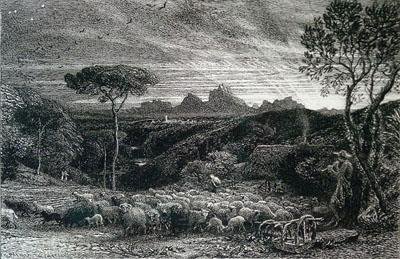Samuel Palmer
dal 22/4/2011 al 25/6/2011
Segnalato da
22/4/2011
Samuel Palmer
The New Art Gallery Walsall, Walsall
Towards the Light exhibition. Palmer's idyllic view of nature relates to the pastoral - a broad artistic type that originated in literature which idealises rural life. Showing nothing of the turbulence of the agricultural revolution, Palmer's landscapes visualise his belief in the presence of God in nature.

Bringing together works from The British Museum, London, The Ashmolean Museum, Oxford and The Fitzwilliam Museum, Cambridge, as well as two etchings from the Garman Ryan Collection, this new exhibition entitled ‘Towards the Light’ explores the work of Samuel Palmer (1805-1881) in relation to the themes of light and literature. Described as a visionary landscapist, Palmer played a key role in the development of Romantic art.
Literature meant a great deal to Palmer; he was an avid reader of pastoral poetry, and much of his work comprises illustrations to his favourite books. He was also a prolific writer and often inscribed his drawings with lines from his much-loved texts. His son recalled how Palmer ‘painted with one hand and wrote with the other.’ Another vital characteristic of Palmer’s art was his exceptional talent for representing light, which he could create equally well in oil, watercolour and etchings.
Palmer’s idyllic view of nature relates to the pastoral - a broad artistic type that originated in literature which idealises rural life. Showing nothing of the turbulence of the agricultural revolution, Palmer’s landscapes visualise his belief in the presence of God in nature. He experimented with various lighting techniques as a means to convey his spiritual ideas, frequently using the transition from morning to night as a metaphor for the passage of time and the journey through life.
Palmer drew inspiration from William Blake and tried to recapture the ‘low glimmering light’ he saw in Blake’s engravings in his own work. Palmer also highly praised Claude Lorraine for his ‘small specks of pure white’ that made everything appear as if it were ‘glittering with dew.’
Exhibition Talk Saturday 25th June, 2pm by exhibition curator Elin Morgan
Child prodigy, Samuel Palmer, first exhibited his paintings in 1819 at the Royal Academy and the British Institution. He began studying under John Linnell at the age of 17, who introduced him to the work of William Blake. Palmer’s relationship with the poet and artist shaped the mystical themes of his work thereafter. In 1824, he painted pastoral scenes in Shoreham, Kent with only ink and a sepia wash. His work gradually lost its poetic influence and took on the common appeal of traditional British landscapists.
Image credit: Samuel Palmer (1805-1881), Opening the Fold or Early Morning 1880. Etching, The Garman Ryan Collection, The New Art Gallery Walsall.
For further information please contact: Chris Wilkinson, Marketing and Development Assistant on 01922 654416 or email: wilkinsonc@walsall.gov.uk
Opening 23 April 2011
The New Art Gallery Walsall
Gallery Square
open Tuesday to Saturday 10am to 5pm. Closed Mondays, Sundays and Bank Holidays
Admission is free



